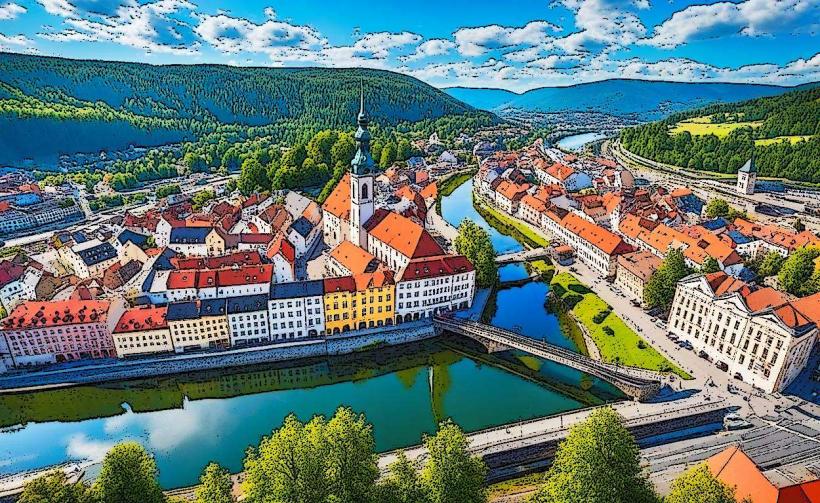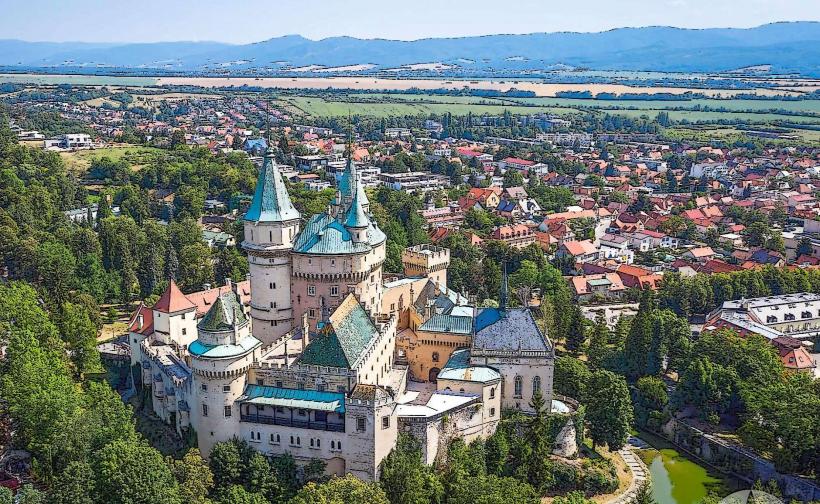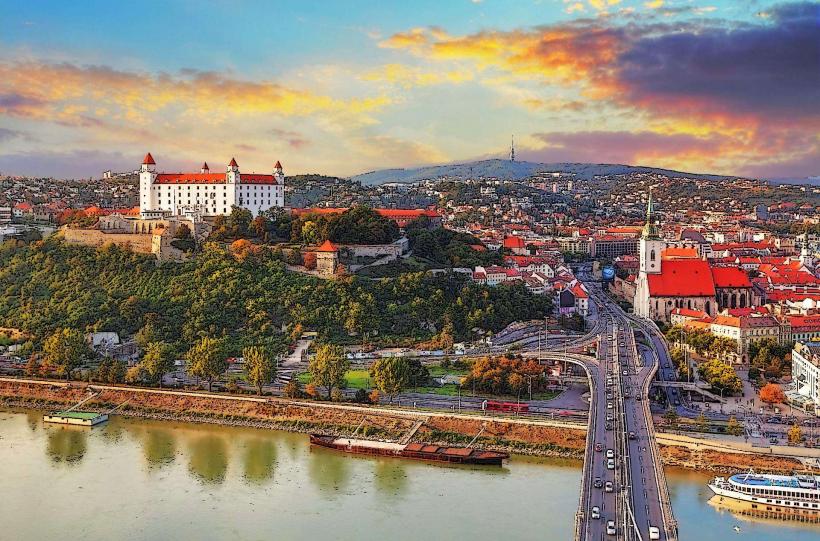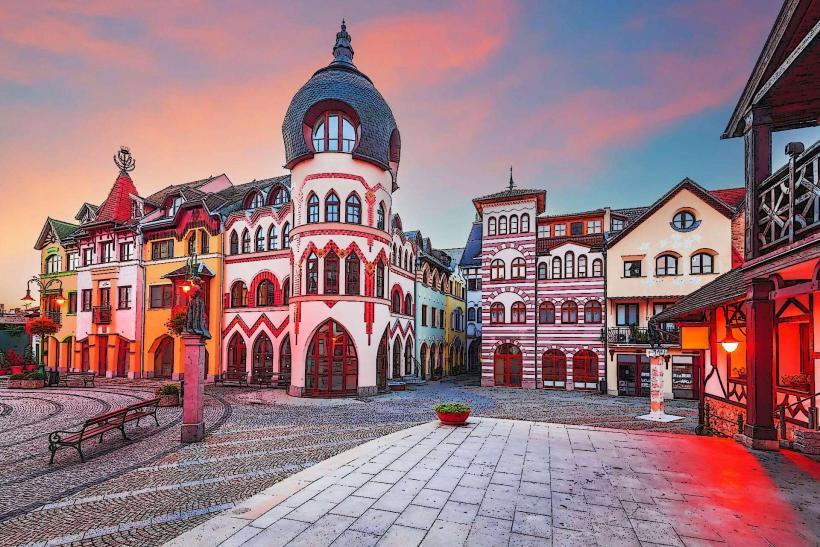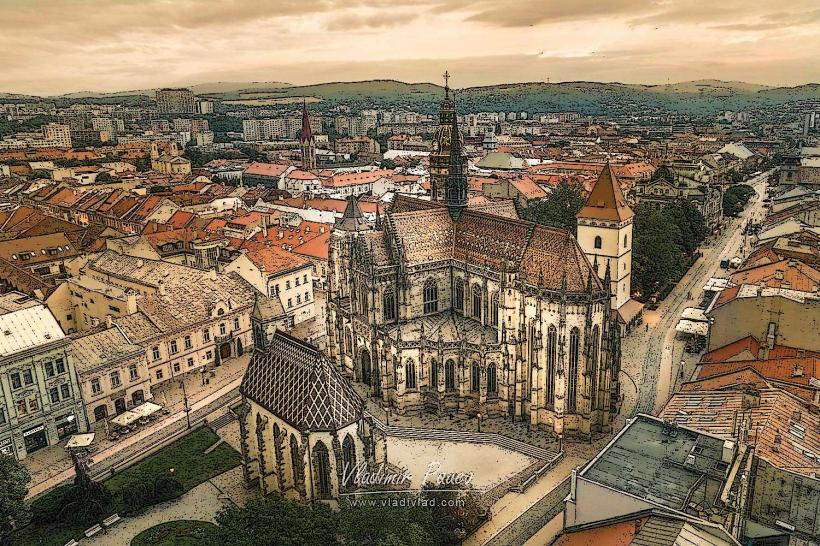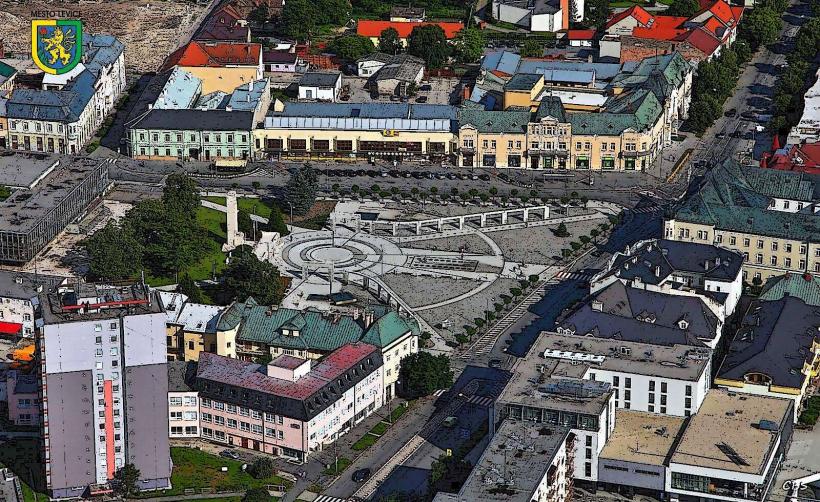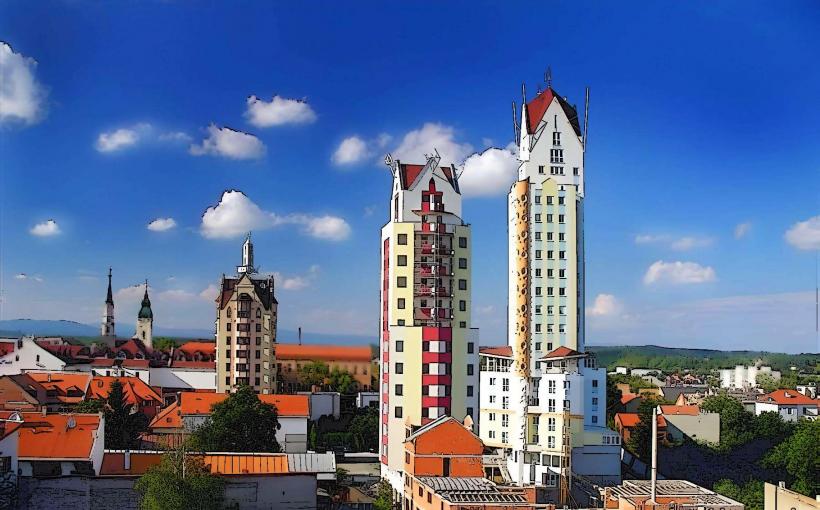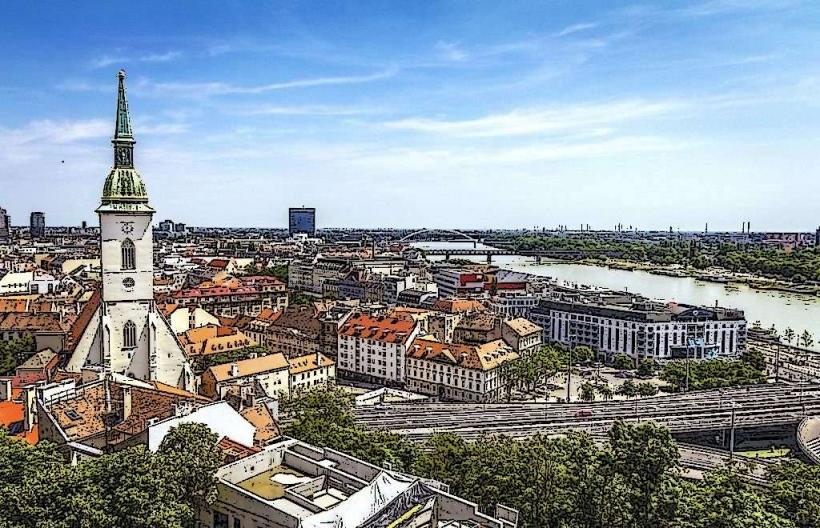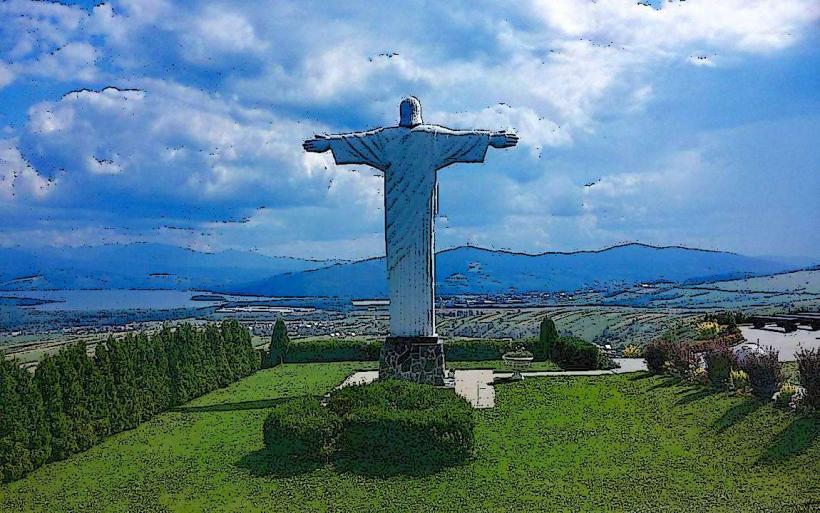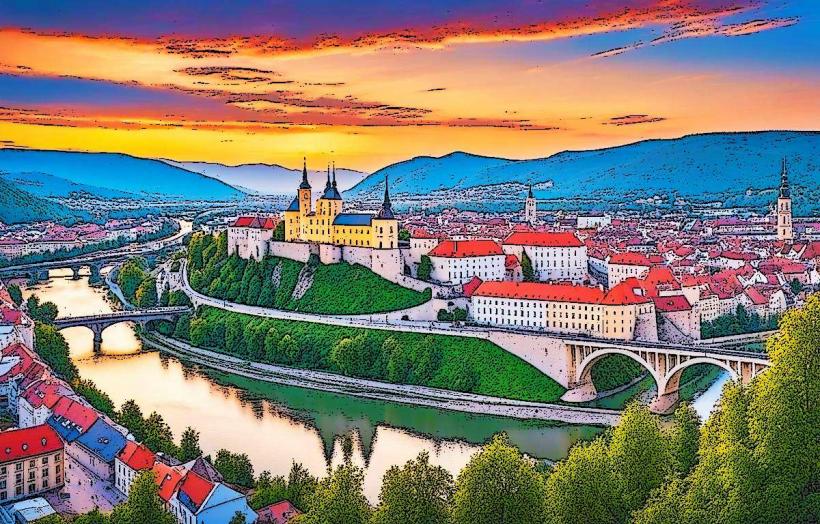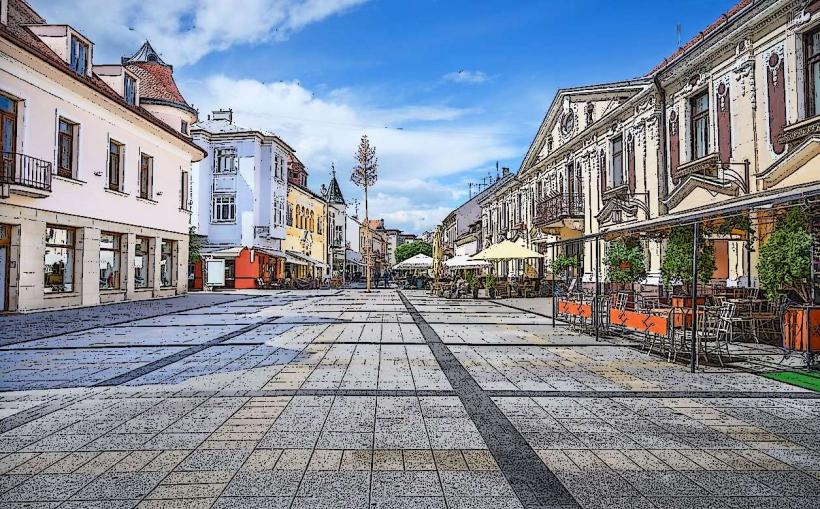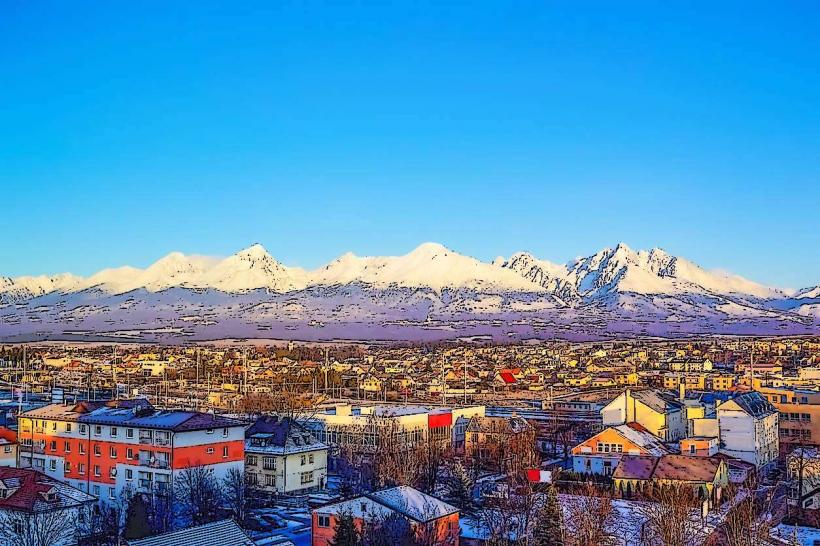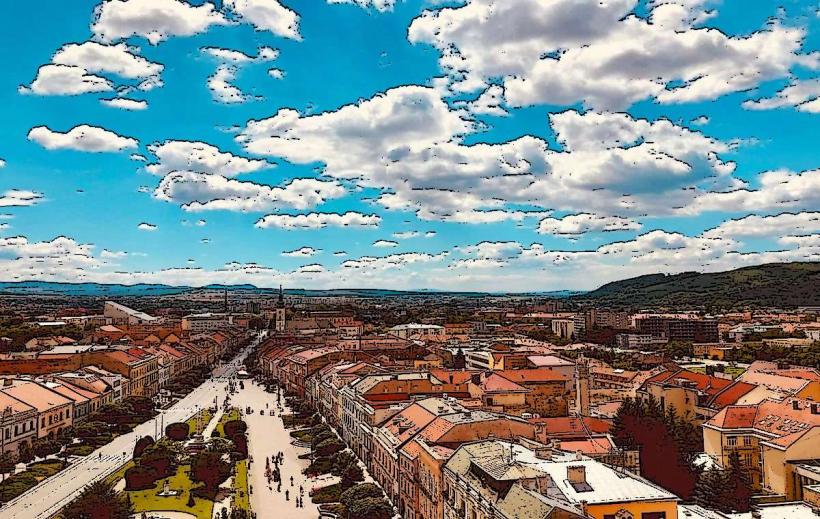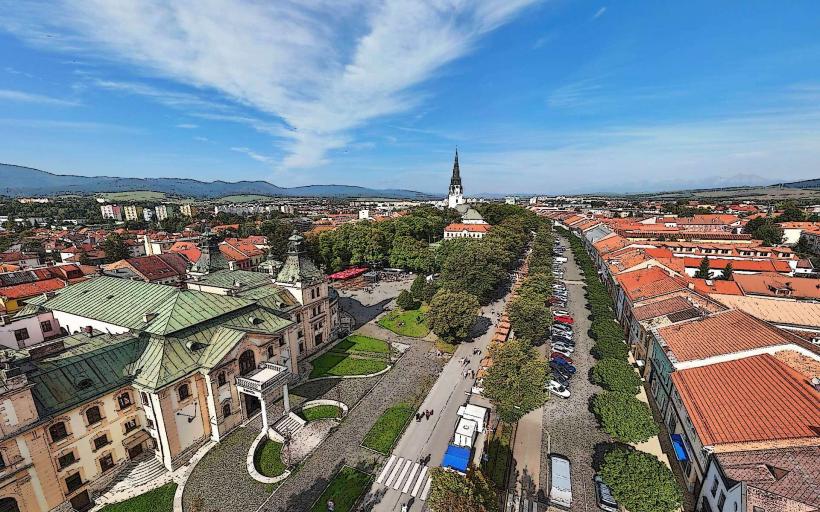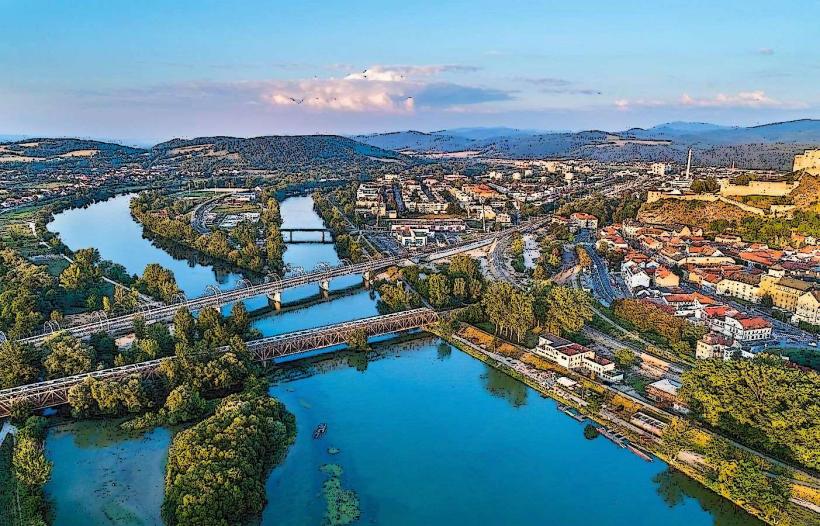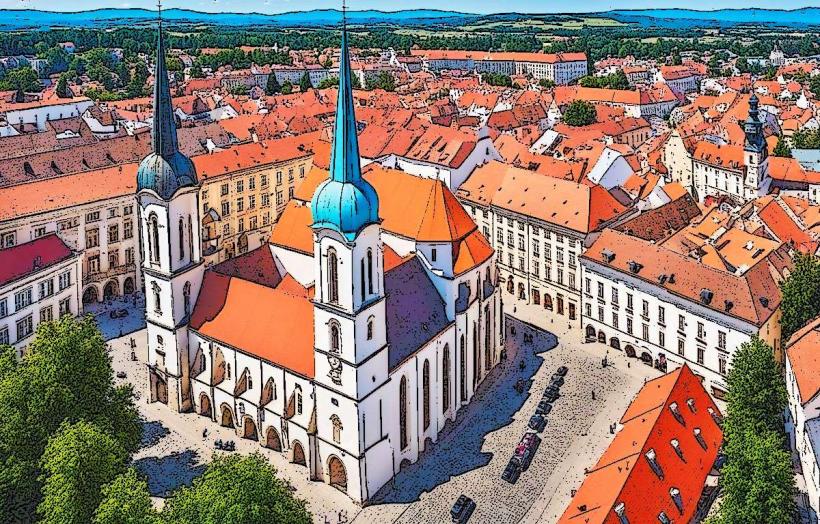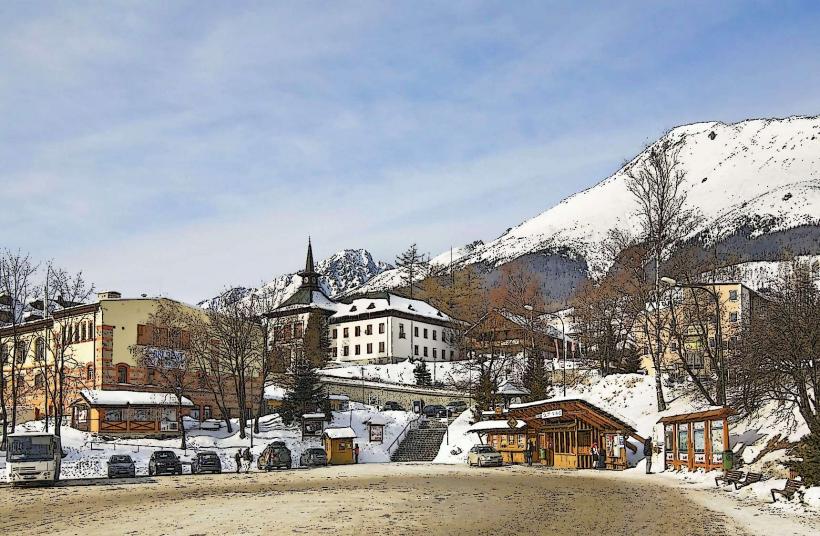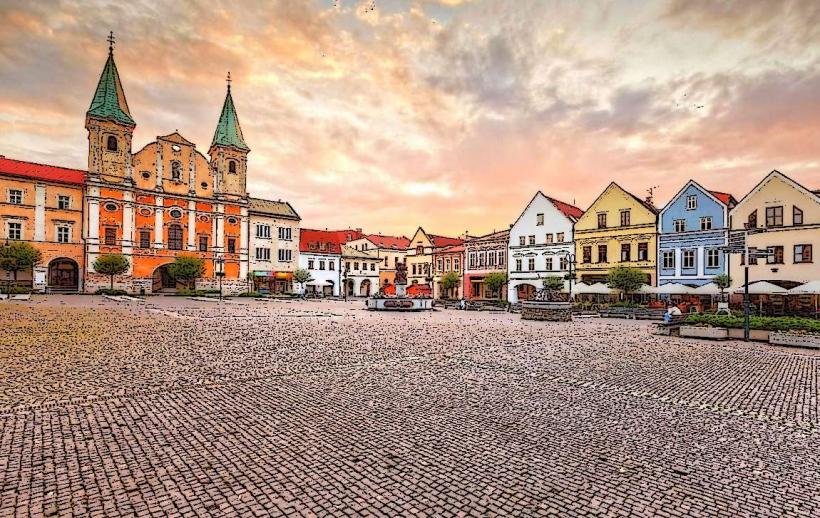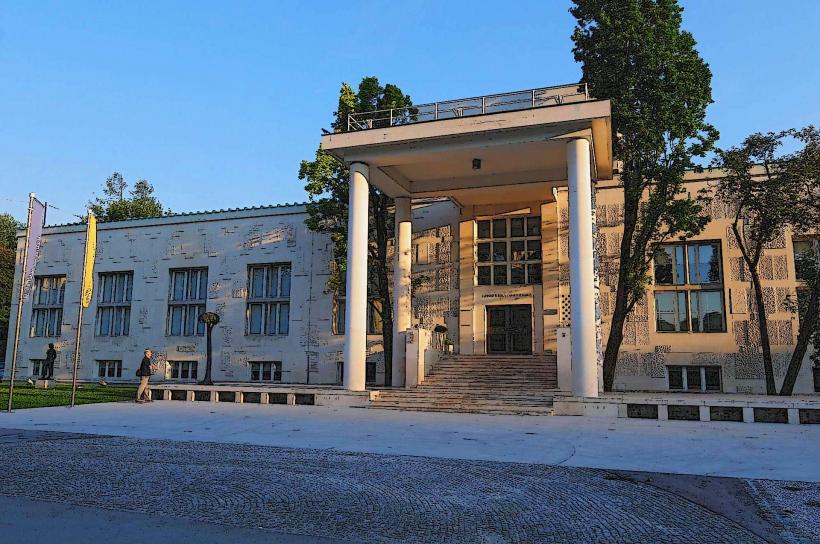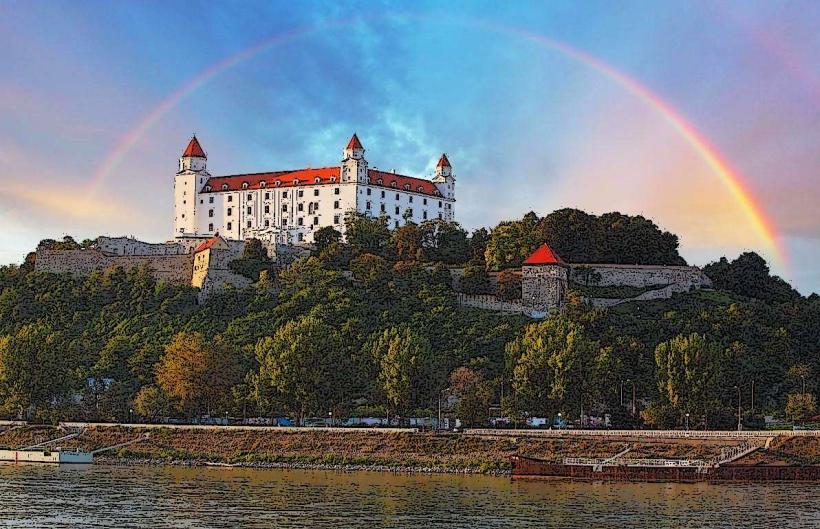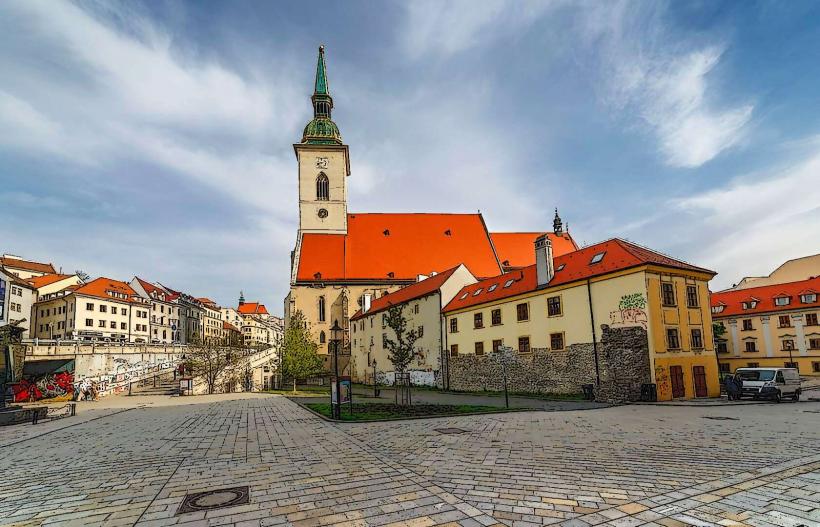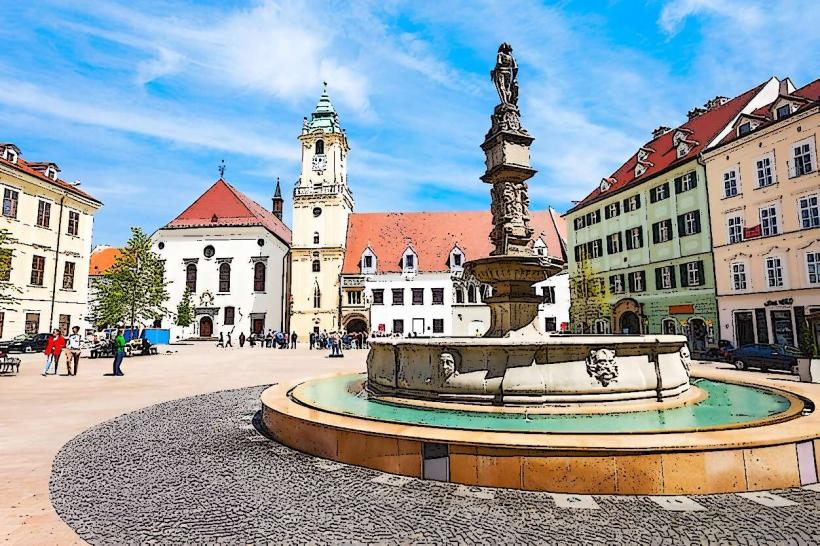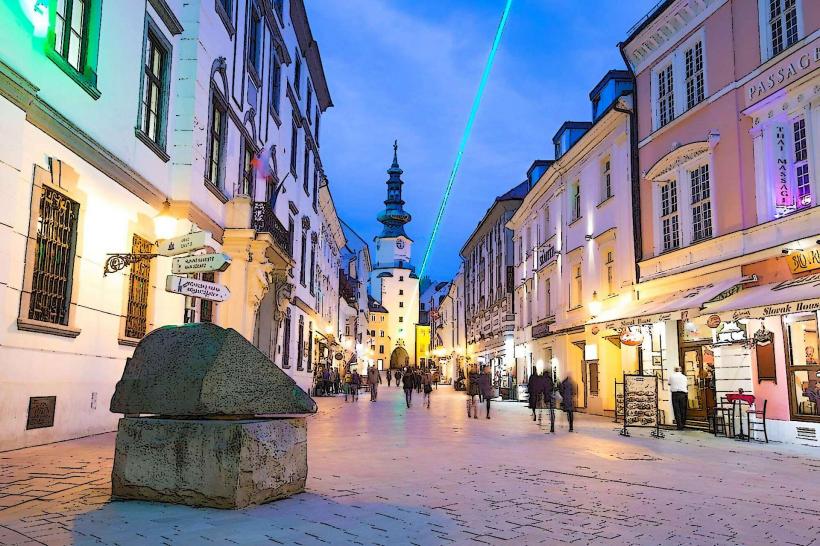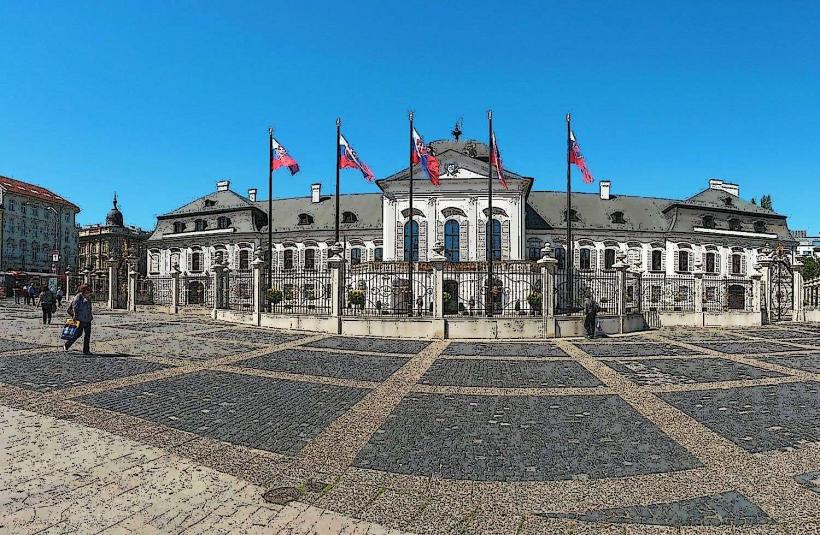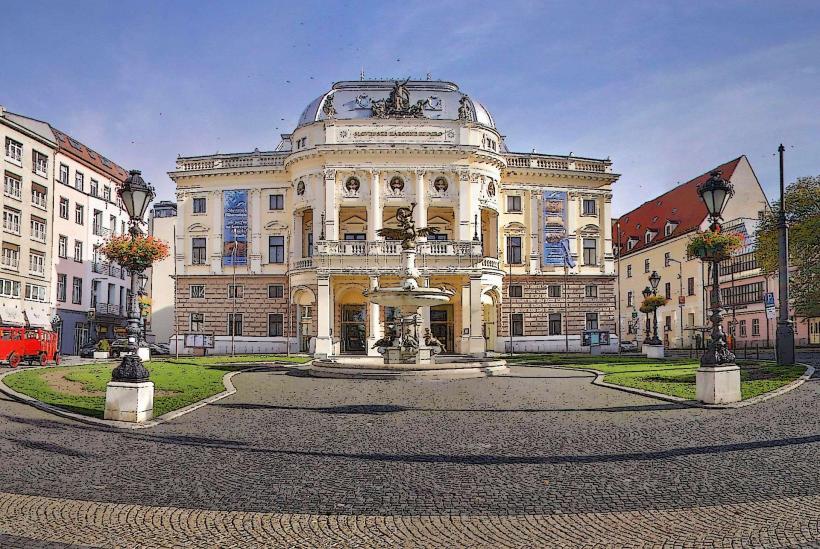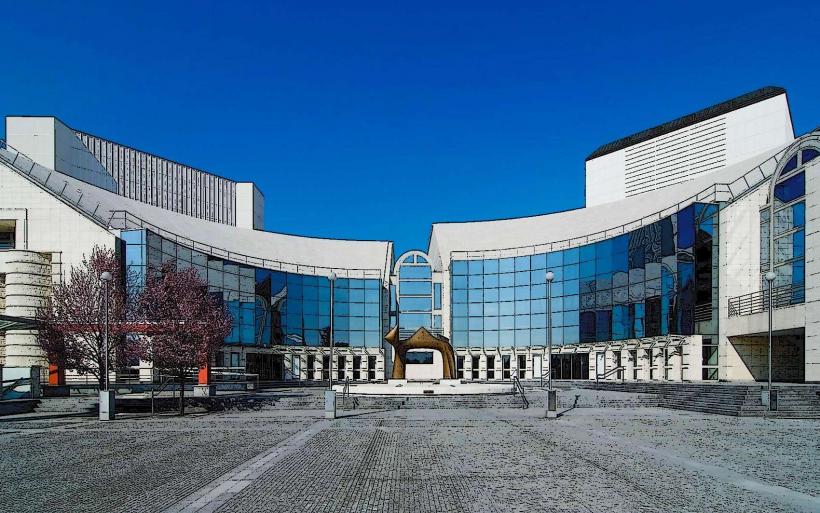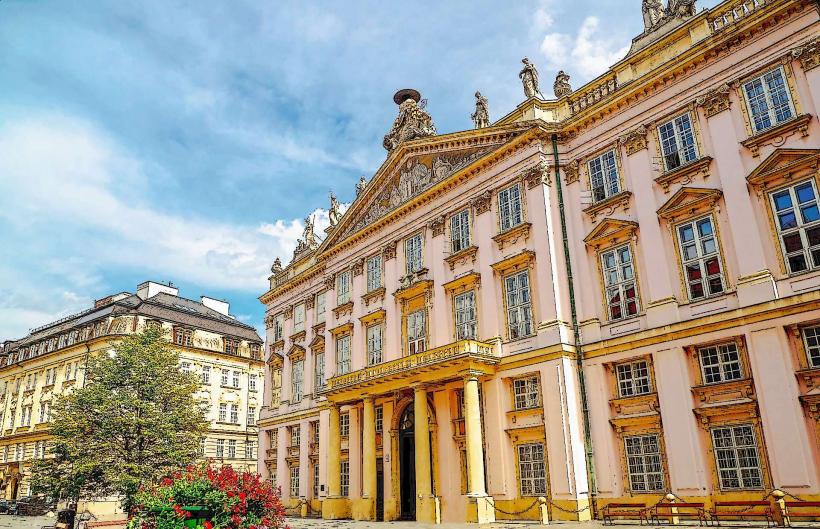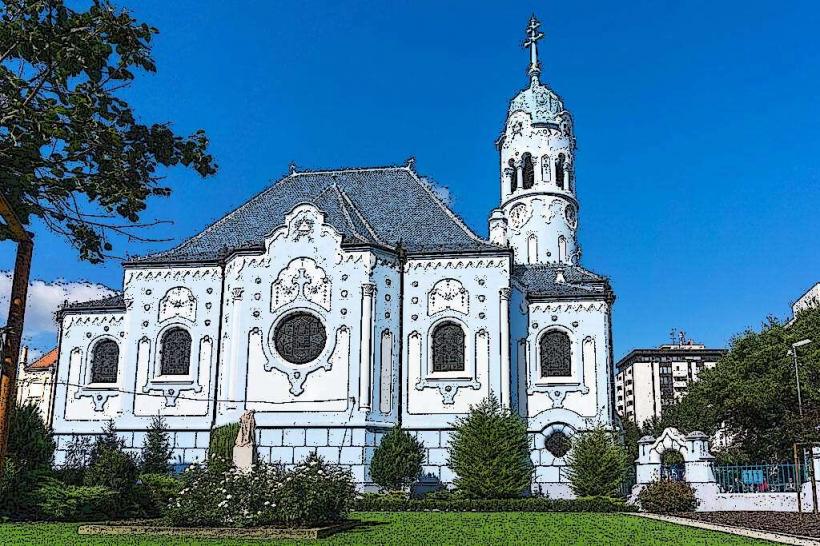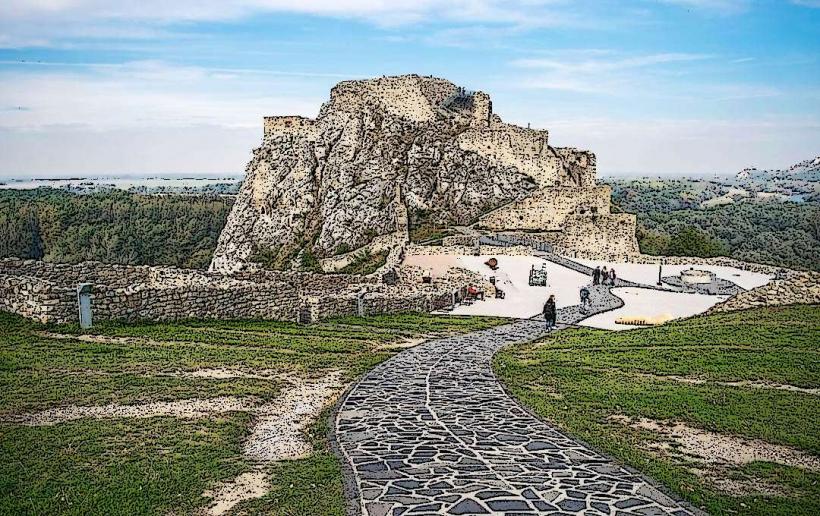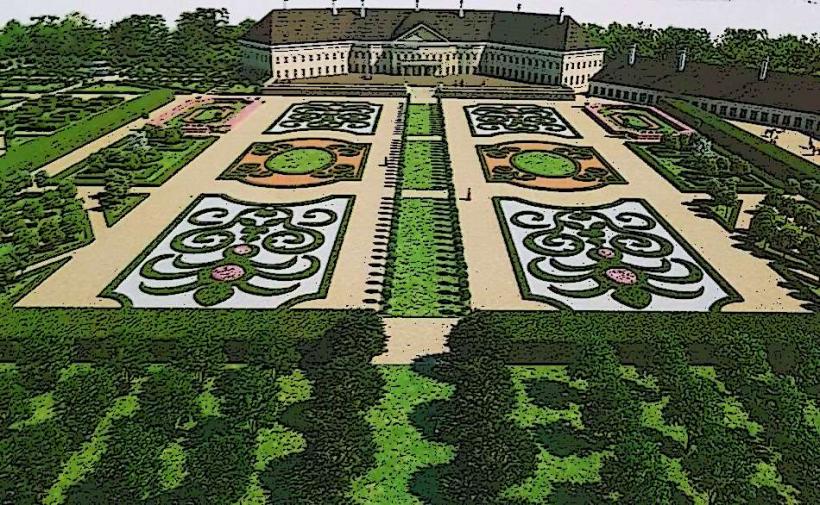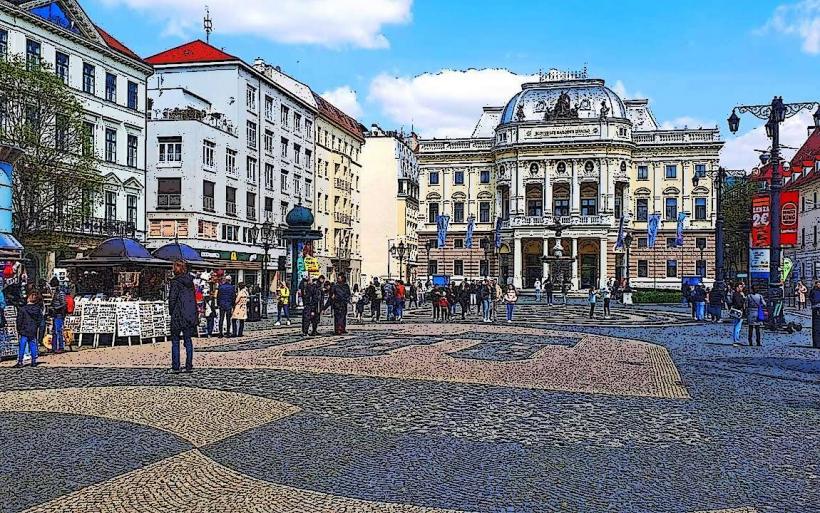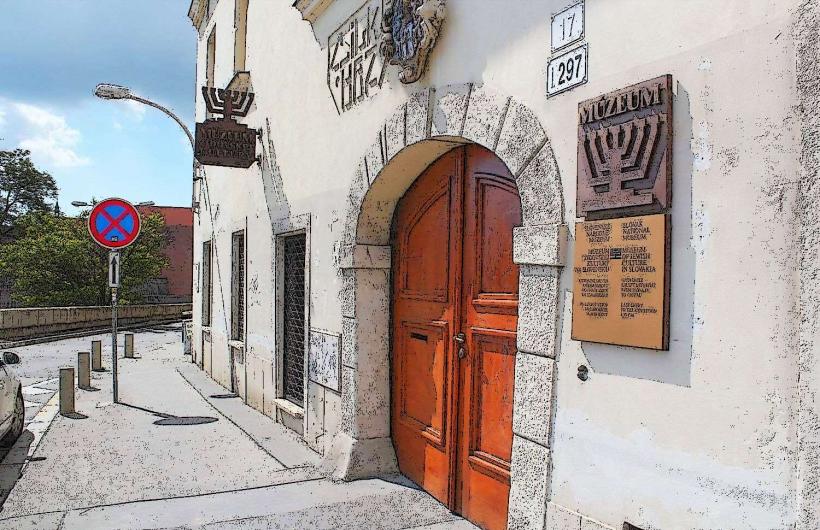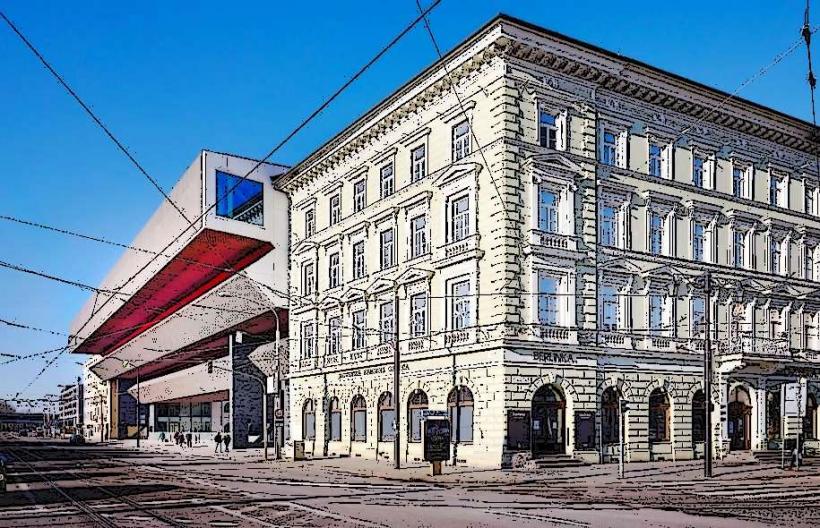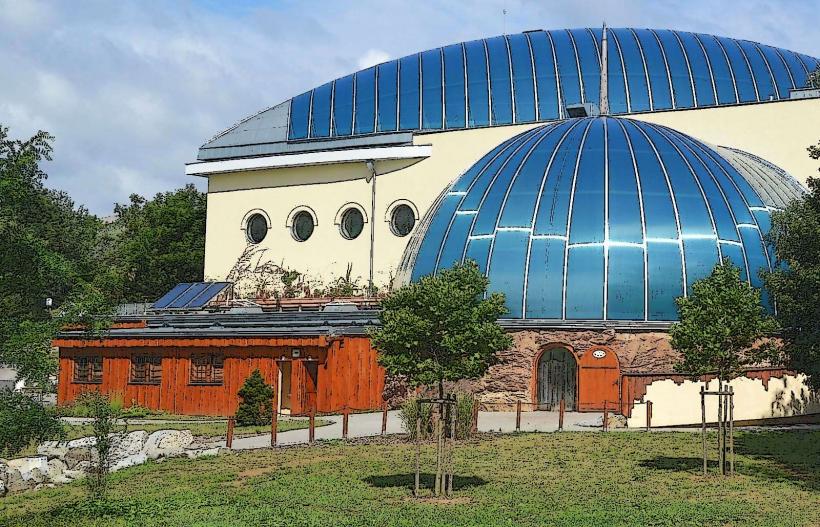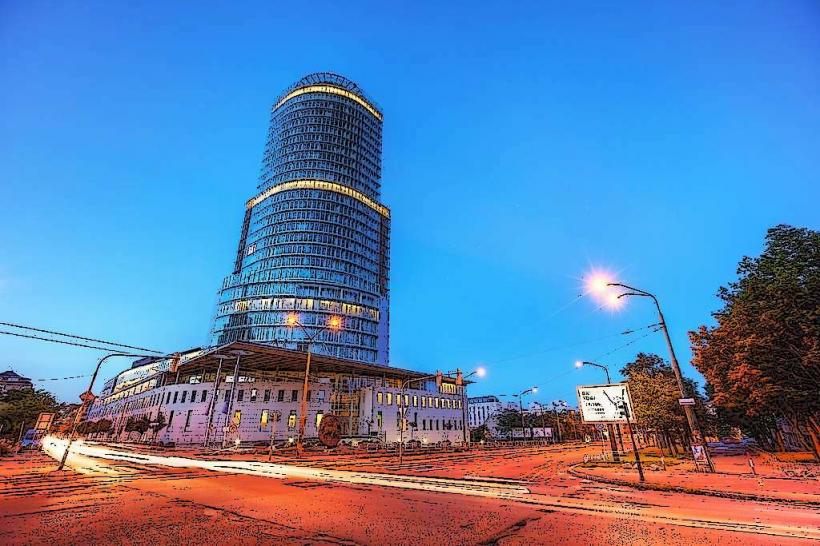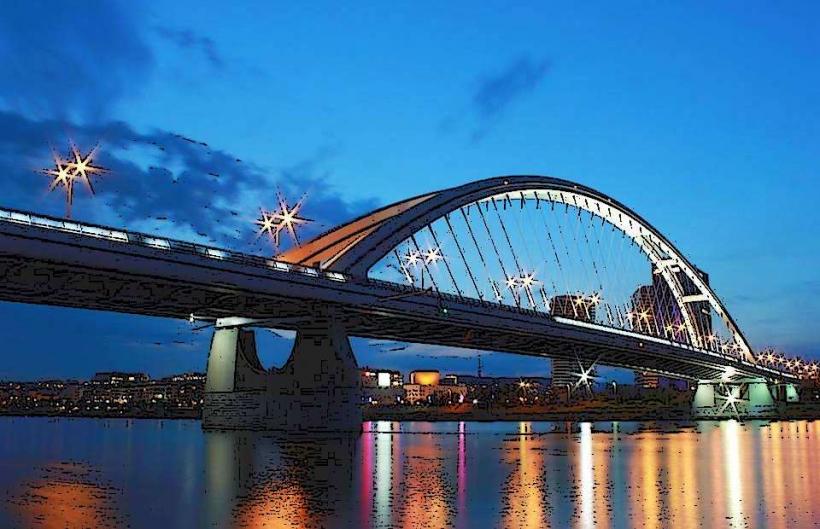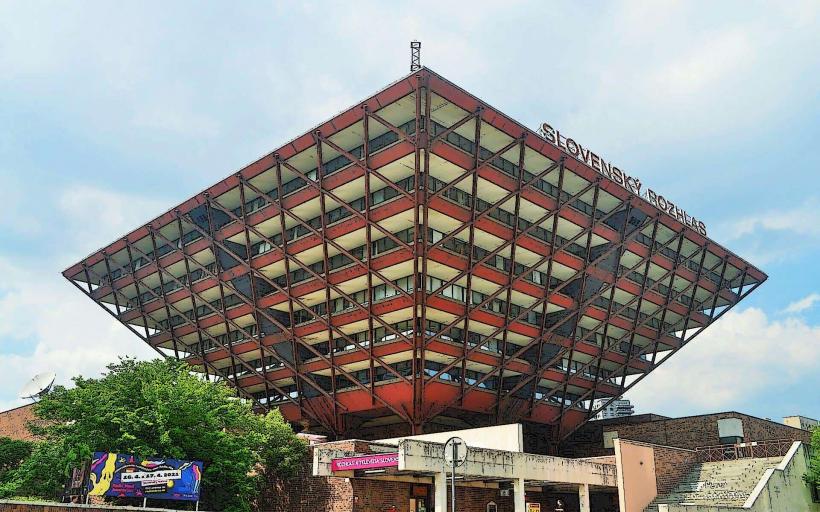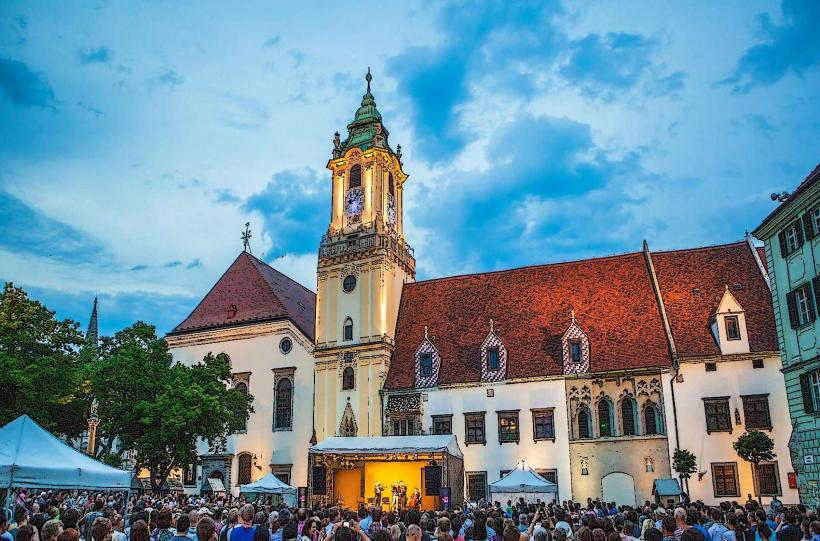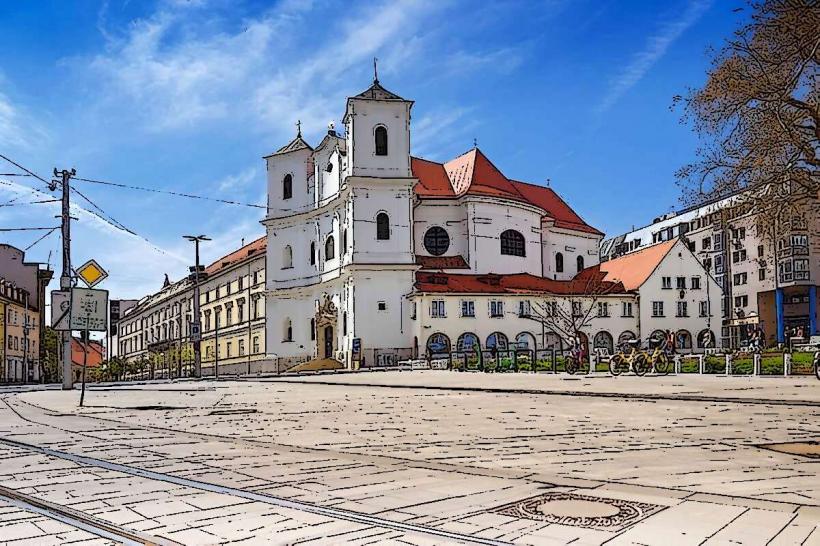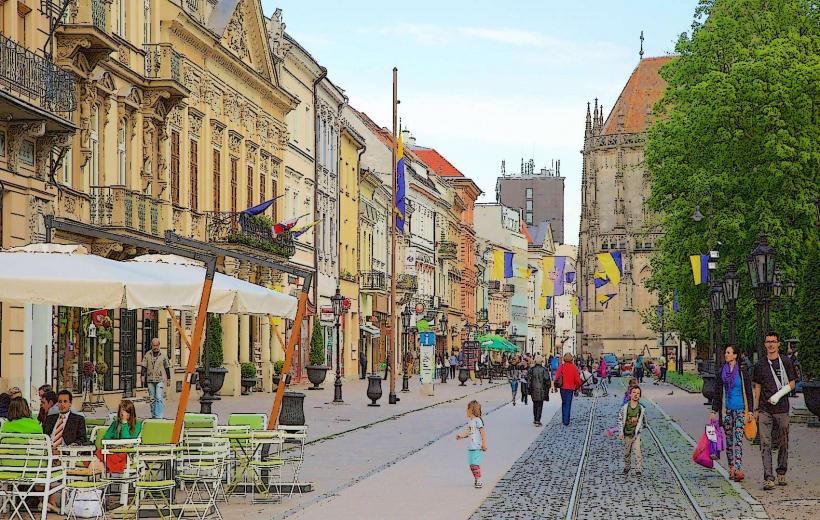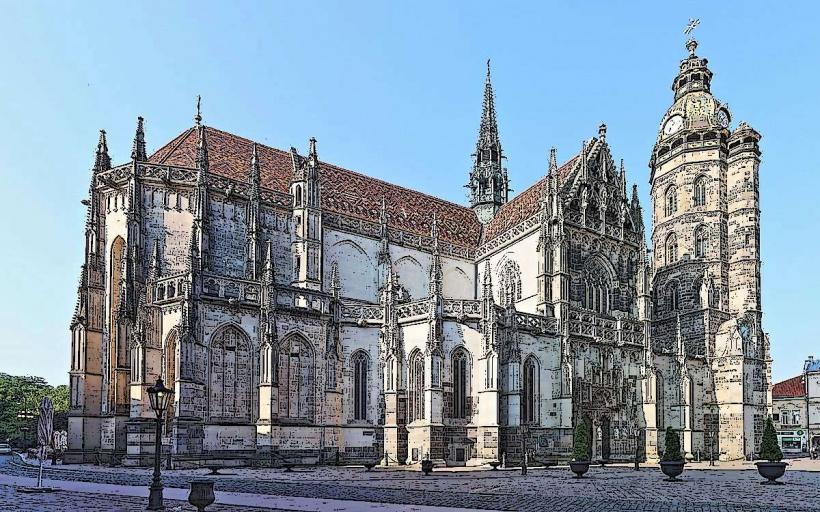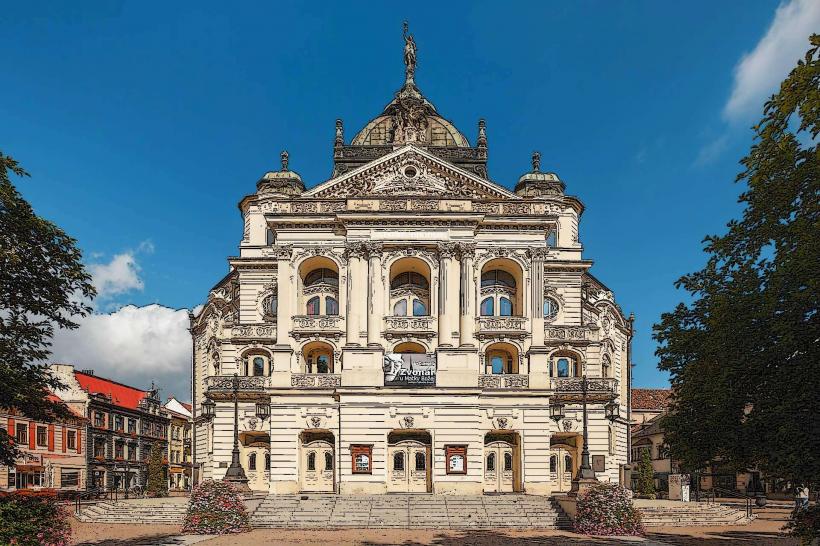Information
Country: SlovakiaContinent: Europe
Slovakia, located in Central Europe, is a landlocked country bordered by Czech Republic to the northwest, Poland to the north, Ukraine to the east, Hungary to the south, and Austria to the west. With its rich cultural heritage, stunning natural landscapes, and historical sites, Slovakia offers a diverse range of experiences for travelers. Below is an overview of Slovakia, including its geography, history, culture, and major attractions:
Geography and Climate
Geography: Slovakia covers an area of about 49,000 square kilometers and is predominantly mountainous. The Carpathian Mountains run through the northern part of the country, dividing it into Western Slovakia, Central Slovakia, and Eastern Slovakia. The highest peak is Gerlachovský štít (Gerlach Peak) in the High Tatras, standing at 2,655 meters. The Little Carpathians are a prominent range in the west, and the Slovak Paradise National Park features stunning canyons and gorges.
Rivers: Slovakia is crossed by several major rivers, including the Danube, Váh, Hron, and Nitra, which contribute to the country’s fertile landscape. The Danube River flows through southwestern Slovakia, providing a vital waterway for trade and transport.
Climate: Slovakia has a continental climate, with hot summers and cold winters. Summers can be warm, with average temperatures ranging between 20°C and 30°C, while winters can be cold, with temperatures often dropping below 0°C in mountainous areas. The higher elevations, particularly in the Tatras, experience heavy snowfall, making them a popular destination for winter sports.
History
Early Settlements: Slovakia has been inhabited since prehistoric times, with archaeological findings suggesting settlements dating back to the Stone Age. The region was part of the Great Moravian Empire in the 9th century, which laid the foundations for the Slovak national identity.
Hungarian Rule: In the late Middle Ages, Slovakia became part of the Kingdom of Hungary. The region played an essential role in Hungarian history, contributing to the development of Hungarian culture and politics.
Austrian-Hungarian Empire: Following the collapse of the Austrian-Hungarian Empire after World War I, the newly formed Czechoslovakia included both Slovakia and the Czech lands, marking the beginning of modern Slovak statehood.
World War II and Post-war Period: During World War II, Slovakia declared independence under Nazi influence in 1939, only to be occupied and annexed by Nazi Germany. After the war, the country became part of the newly formed communist Czechoslovakia. The Velvet Revolution of 1989 marked the end of communist rule, and Czechoslovakia peacefully split into the Czech Republic and Slovakia in 1993, becoming an independent state.
Membership and EU: Slovakia joined the European Union in 2004 and adopted the Euro as its currency in 2009.
Government and Politics
Form of Government: Slovakia is a parliamentary democracy, with the President serving as the head of state and the Prime Minister as the head of government. The National Council of the Slovak Republic (parliament) is the legislative body. The President is elected by popular vote and acts largely in a ceremonial capacity.
Political Landscape: Slovakia has a multi-party system, and its political scene has been marked by a mix of social-democratic and conservative parties. The Smer-SD party, which traditionally supports social policies and labor rights, has been influential in Slovak politics, though the political landscape has seen significant shifts in recent years.
Economy
High-income Economy: Slovakia has a high-income economy, with significant growth in various sectors, including automotive, electronics, and manufacturing. The country is home to major international car manufacturers, such as Volkswagen, Kia, and PSA Group.
Industry: The industrial sector, particularly the automotive industry, drives the Slovak economy. Other important industries include electronics, chemical production, and food processing.
Tourism: Slovakia is known for its natural beauty, castles, and historical sites, making tourism an important economic sector. Visitors come for activities such as hiking in the High Tatras, skiing, and exploring cultural landmarks.
Currency: The official currency is the Euro (EUR).
Culture and Language
Language: The official language of Slovakia is Slovak, a West Slavic language related to Czech. It has influences from Old Church Slavonic and was influenced heavily by Hungarian due to Slovakia’s historical ties with the Kingdom of Hungary. The Slovak language has literary and regional dialects, and it is widely spoken across the country.
Literature and Art: Slovak literature has a rich history, with notable writers such as Jozef Gregor-Tajovský and Michal Kováč. Slovakia's art scene includes both traditional and contemporary works. Folk art, particularly pottery and embroidery, remains a significant part of the Slovak cultural heritage.
Music and Dance: Slovakia has a vibrant musical tradition, with folk music being a key part of its cultural identity. The goral music, fujara (a long wooden flute), and zsolnay ceramics are symbols of traditional Slovak music and craftsmanship. The Slovak Philharmonic Orchestra is one of the country’s premier cultural institutions.
Architecture: Slovak architecture varies from Romanesque, Gothic, and Baroque structures to more modern designs. Cities like Bratislava, Košice, and Nitra boast impressive medieval castles, Renaissance townhouses, and modern buildings. The Bratislava Castle, Košice Cathedral, and Bojnice Castle are popular attractions.
Cuisine: Slovak cuisine is hearty and diverse, heavily influenced by its rural traditions and neighbors. Dishes like Bryndzové halušky (dumplings with sheep’s cheese), Kapustnica (cabbage soup), and Klobása (smoked sausage) are popular. Slovak wines, especially from the Tokaj and Dunaj regions, are known for their quality.
Major Cities and Attractions
Bratislava: The capital and largest city, Bratislava is situated on the banks of the Danube River and close to the borders with Austria and Hungary. Key attractions include Bratislava Castle, the Old Town, and the Blue Church (St. Elizabeth's Church). The city has a mix of architectural styles from medieval to modern, making it a vibrant and dynamic destination.
Košice: Slovakia's second-largest city and a significant cultural hub, Košice is home to the St. Elisabeth Cathedral, the State Theatre, and various museums like the East Slovak Museum. Košice’s Old Town, known for its medieval and baroque buildings, offers a glimpse into the city’s rich history.
Nitra: An ancient city located in western Slovakia, Nitra is known for its Nitra Castle and St. Emmeram’s Cathedral. It has a rich historical and cultural heritage, with Romanesque and Gothic architectural influences.
Trnava: Often referred to as the “Little Rome of Slovakia,” Trnava has numerous churches and historical sites, including the St. John the Baptist Cathedral and the City Walls.
Žilina: A major industrial and transportation hub in the north, Žilina is surrounded by the stunning Malá Fatra and Veľká Fatra mountains. The city features a historic Old Town with Gothic and Renaissance architecture.
Natural Attractions
High Tatras National Park: Slovakia’s most famous natural attraction, this mountain range offers hiking, skiing, and stunning alpine scenery. The Gerlach Peak, the highest point in Slovakia, attracts climbers from all over Europe.
Slovak Paradise National Park: Known for its gorges, waterfalls, and caves, this park is a popular destination for outdoor enthusiasts and nature lovers.
Low Tatras National Park: Home to the Chopok peak and numerous hiking and cycling trails, this park offers stunning natural beauty and wildlife.
Danube River: This major waterway flows through Slovakia, offering opportunities for river cruises and visits to towns like Komárno, Nitra, and Bratislava.
Conclusion
Slovakia is a land of natural beauty, rich history, and cultural heritage, offering a wide range of activities and sites for travelers. From exploring the historic castles and towns to enjoying outdoor adventures in the High Tatras and Slovak Paradise, Slovakia is a unique and rewarding destination in Central Europe. Whether you’re interested in history, nature, or traditional Slovak cuisine, the country has something to offer for everyone.

